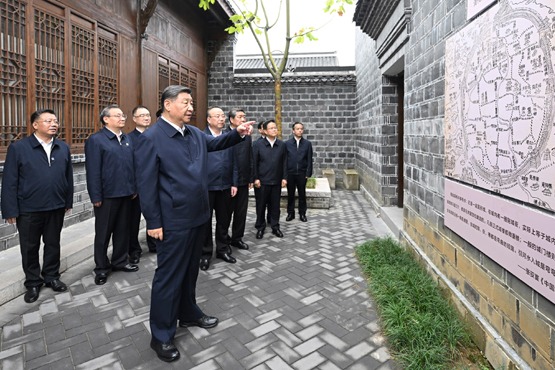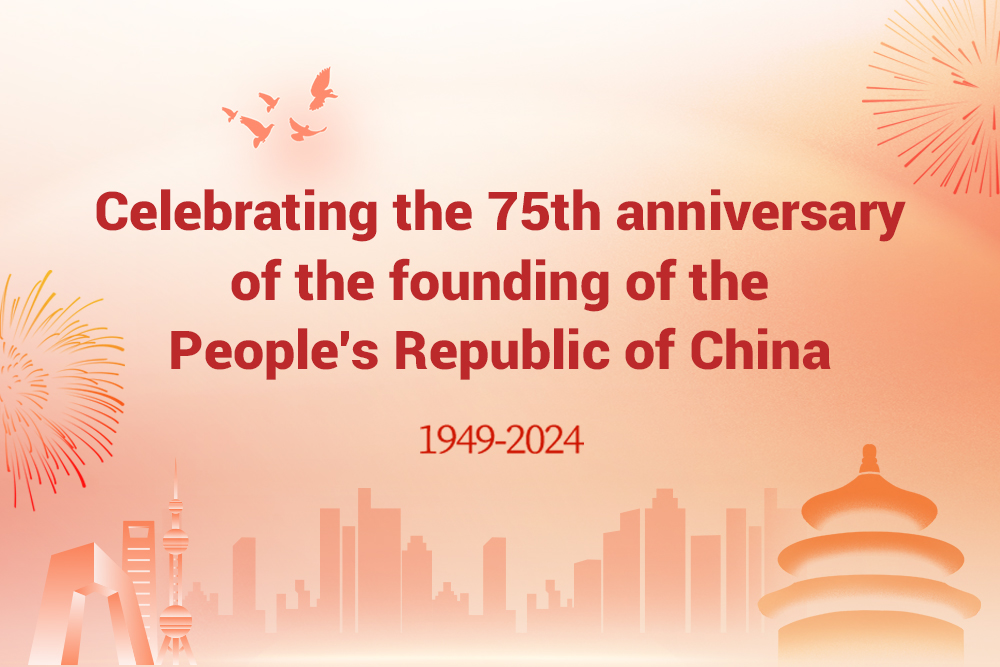In less than a century, Chongqing becomes bridge capital of China

Welcome to the most exciting city on Earth: Chongqing. In the heart of southwestern China, surrounded by the sprawling Jialing and Yangtze rivers, lies the city of Chongqing. Also known as the bridge capital of China, this commercial and industrial hub boasts more than 14,000 bridges and deep tunnels. Despite its mega size, it's highly functional, modern and efficient, connecting people and China, where transportation is the backbone for this rapidly expanding and growing urban city.
However, huge prosperity wasn't always the norm for Chongqing. In fact, as few as 100 years ago, long before any bridges spanned across the waters, you would have seen a completely different world. Contrasting with the city's modernity now, the land and its people suffered from a poor and underdeveloped life. Because of its mountainous terrain, steep slopes and broad rivers isolated the city from the rest of the country and limited local people's opportunities. As a result, transportation became a massive challenge. Despite that hurdle, the people of Chongqing never backed down in attempting to overcome it.
In trying to connect the main urban areas along the riverbanks, the local government decided to implement its first bridge project across the Jialing River in 1958. That bridge was only the small catalyst of what would boom into decades of prosperity and sheer speed in city development. This is the shift from impoverishment to fast development like nowhere else in the world. What once was near-impenetrable terrain now has become a hub of connection. Whether for better transportation or strengthening the connections between local areas, the number of bridge projects only increased in scale and design.
With everything from the world's largest stone arch bridge to a 5G-wired road-rail bridge, Chongqing has practically every kind of bridge -- including arch, beam, cantilever, suspension, cable-stayed, truss and tied-arch.
Chongqing would rise to become the holder of 17 world bridge records in only a few short years: the world's longest span steel arch bridge, longest transit tied-arch bridges for dual highway and rail traffic, first partially cable-stayed bridges, and many others.
The future of the construction industry in Chongqing looks bright. A rare and complex Hongyan Village Bridge and Tunnel will pass through more than 2,000 buildings. This is a three-dimensional superimposed design of four layers and seven tunnels. Highway and rail transit tunnels, layers of vertical expressways, this is a mega-project, and these are the people that built it. Despite the complicated geology of the area, this will be an impossible engineering feat that becomes a reality this year.
And here is the Baijusi Yangtze River Bridge construction underway. It is the world's largest span steel truss cable-stayed bridge with a two-way eight-lane urban expressway and lower level rail transit. The main bridge adopts the shape of a multi-curved water drop, which has a rich cultural connotation inspired by Chongqing, a city of mountains and rivers. The people of Chongqing changed the city's destiny through tireless efforts leading the city to a bright future, promoting regional economic development and prosperity.
With the booming Chongqing Rail Transit, the city is expanding its infrastructural capabilities beyond bridges alone. The monorails stand as an achievement on their own, as Chongqing owns the world's longest and busiest single monorail line in the world, having the powerful ability to cut directly into buildings and forests.
Where large mountains once stood in the way, the people have pushed through deep tunnels and high overpasses along the vast landscape. Proudly renowned for its spectacular infrastructure and intricate crossroads, Chongqing is, without a doubt, a proud testament to the endeavors of its people and the government in building a beautiful city for a better life.
Without a doubt, Chongqing has quickly established itself as a huge player on the global stage. In the context of the CPC's 100th anniversary in July, this accomplishment is unprecedented. However, the rapid growth only begs the question — if Chongqing can go from a poor city to being internationally recognized as the bridge capital of China in as little as 100 years, just what will take place next?
With a huge investment of more than 420 billion yuan for intricate roads, high-speed subways, tunnels and more, Chongqing will only continue to develop at speeds of which the world has never seen the likes of before. However, the city will always be known for its gorgeous bridges at the core of it all. Like the veins of a beating infrastructural heart that connect everyone, they will always be physical proof of the everlasting spirit and determination of the Chongqing people to succeed.
- Xi to attend 16th BRICS Summit in Kazan, Russia
- Xi stresses importance of sci-tech in advancing Chinese modernization
- Xi stresses leveraging national development strategies to advance Chinese modernization in Anhui
- Xi stresses promoting traditional Chinese virtues
- Former minister of justice arrested for suspected bribe-taking
- China saw 30 pct increase in border crossings in Q3




































